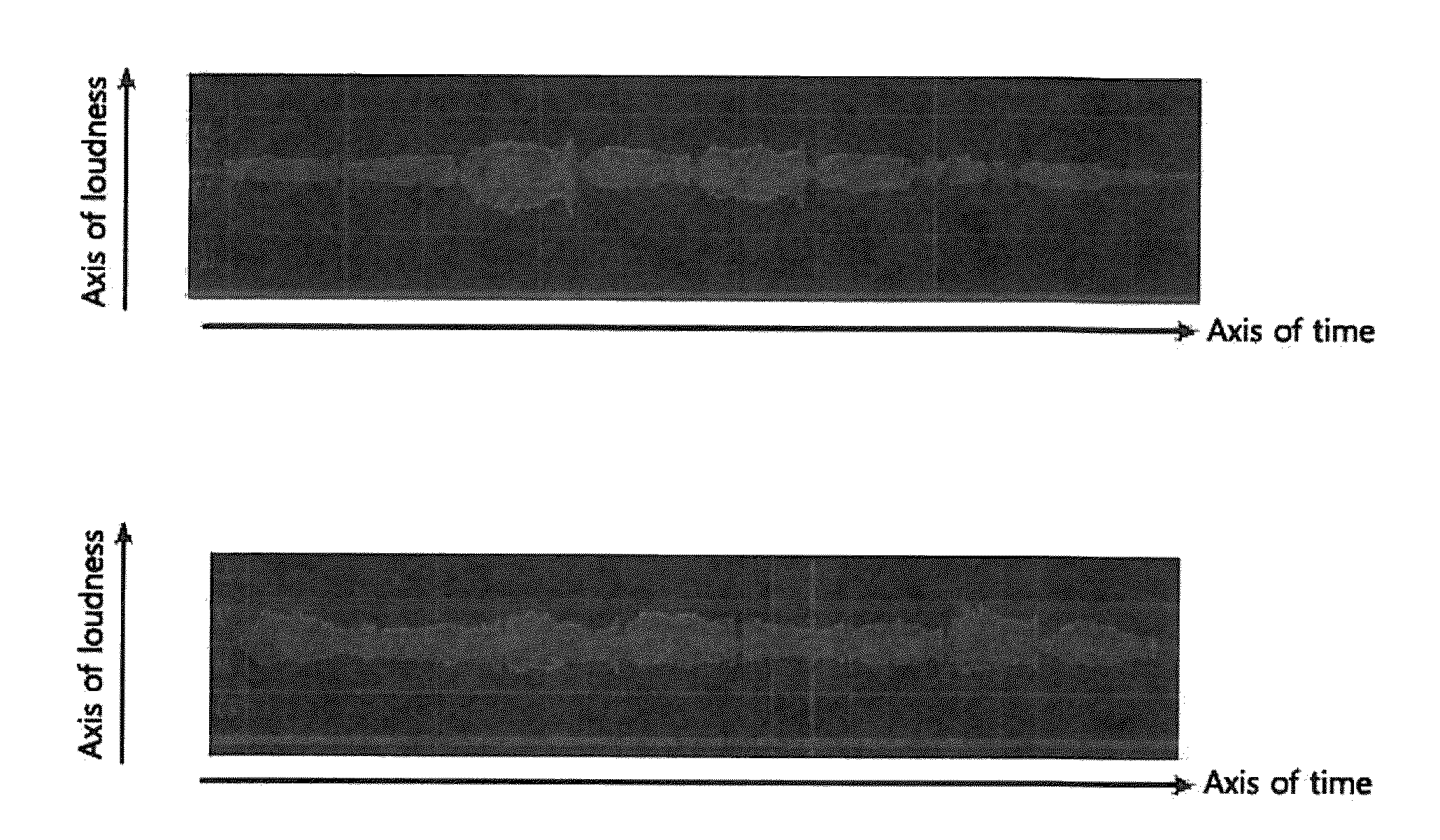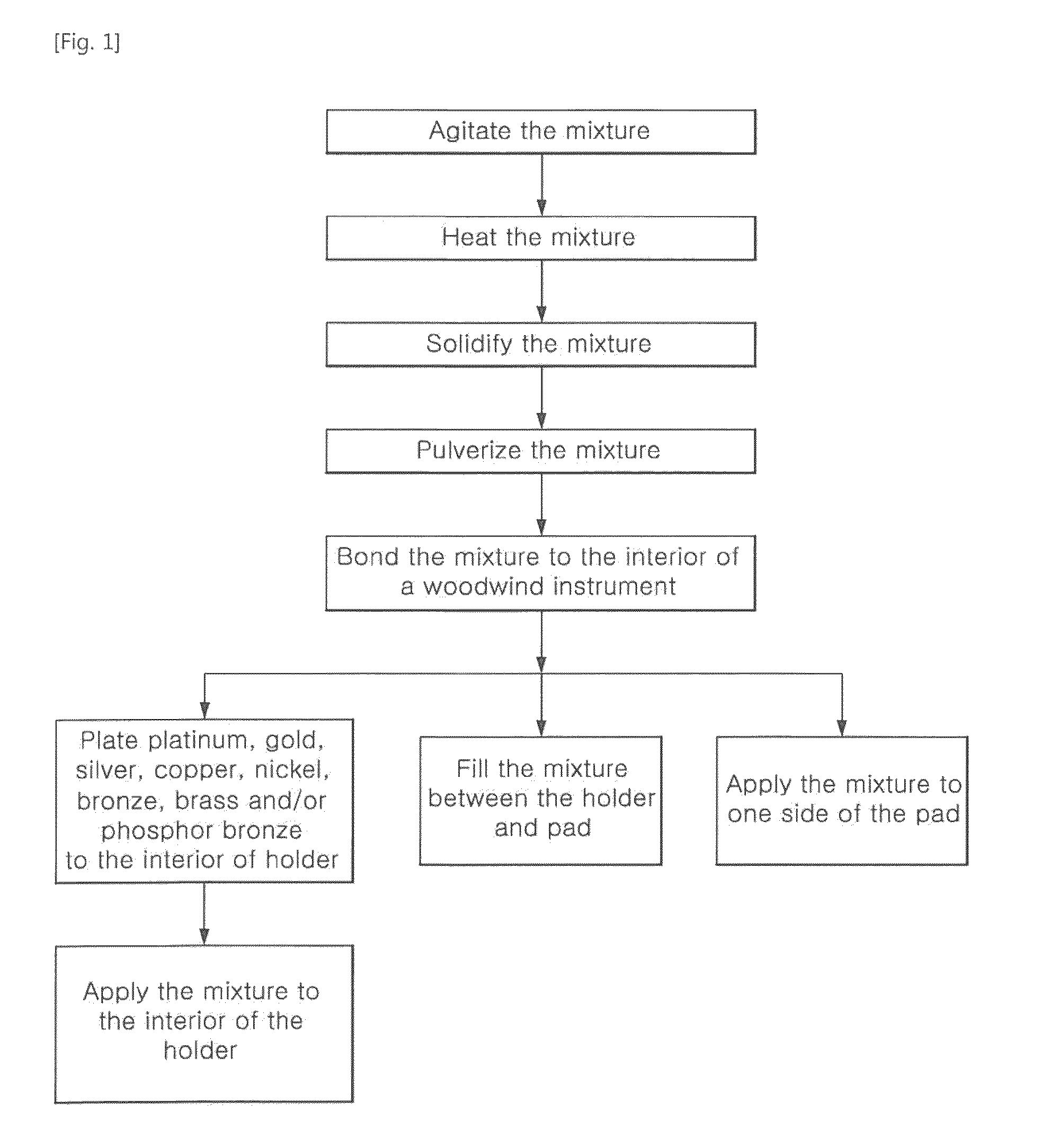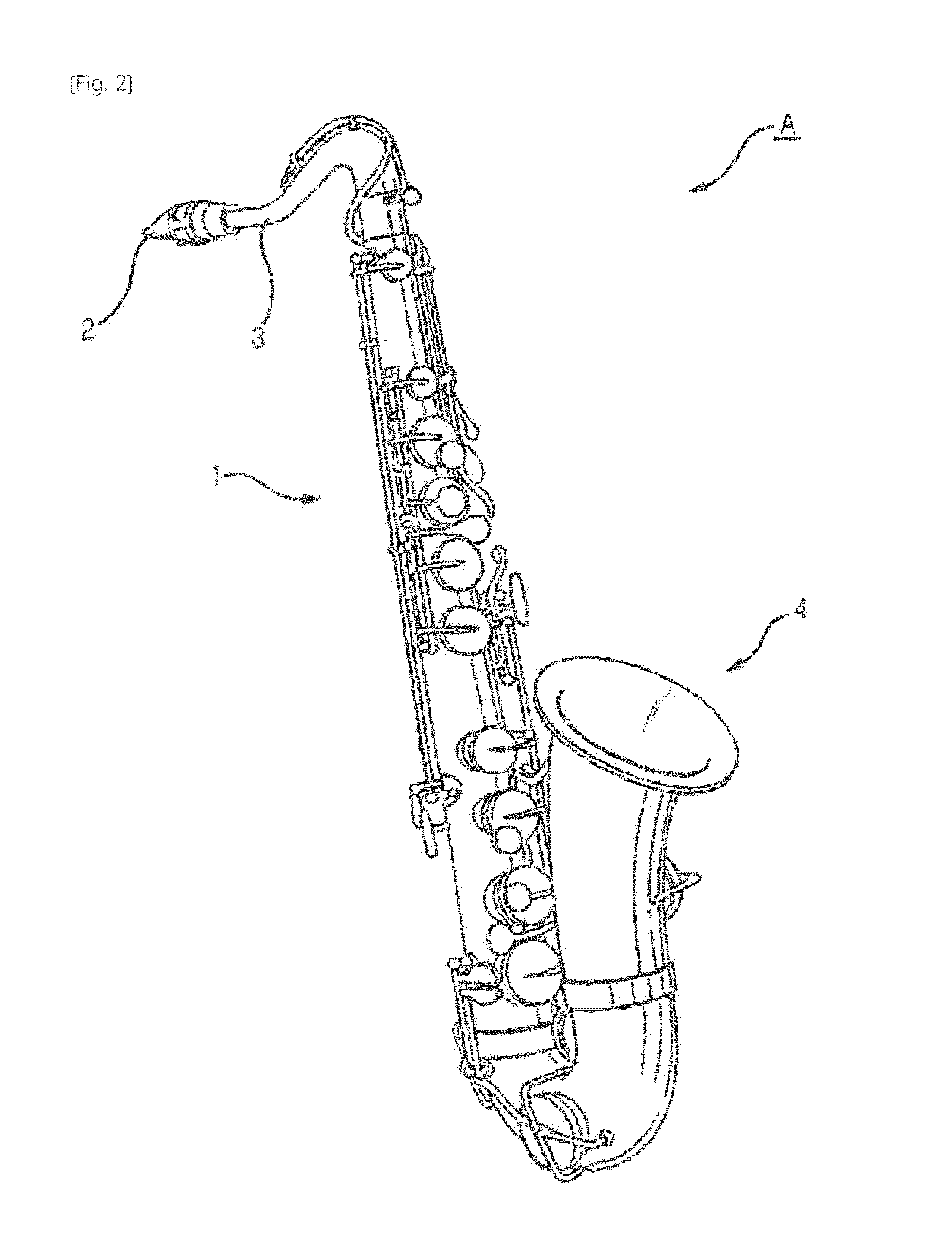Method for increasing resonance of instrument and the instrument
a technology of increasing resonance and string instruments, applied in the field of increasing resonance of instruments and instruments, can solve problems such as sound quality problems, resonance effects are weakened, and cannot be perfectly identical, and achieve the effects of improving resonance of string instruments, improving sound quality, and enjoying practice or playing
- Summary
- Abstract
- Description
- Claims
- Application Information
AI Technical Summary
Benefits of technology
Problems solved by technology
Method used
Image
Examples
Embodiment Construction
[0173]Terms and words that have been used as to and as for the present descriptions and scope of claims shall not be interpreted being limited to customary or literal meanings as they are, but rather construed as meanings and concepts consistent with the technological ideas and thought of the present invention under the groundings that an inventor is entrusted to define terms and words where or as appropriate for its own in order to describe his or her invention(s) with the best illustrative ways.
[0174]Therefore, the embodiments as denoted in the present descriptions as well as the constructions as illustrated in the drawings merely account for the most preferred embodiments in connection with the present invention, in no case representing all technological ideas of the present invention, so it shall be understood that, at the time of the application of this invention, there may be a variety of modifications and equivalent arrangements replaceable for what are claimed herein.
[0175]H...
PUM
 Login to view more
Login to view more Abstract
Description
Claims
Application Information
 Login to view more
Login to view more - R&D Engineer
- R&D Manager
- IP Professional
- Industry Leading Data Capabilities
- Powerful AI technology
- Patent DNA Extraction
Browse by: Latest US Patents, China's latest patents, Technical Efficacy Thesaurus, Application Domain, Technology Topic.
© 2024 PatSnap. All rights reserved.Legal|Privacy policy|Modern Slavery Act Transparency Statement|Sitemap



